Roland Harvey has just made me a cup of Earl Grey tea, and we’re chatting about his latest art projects.

At his studio in Fish Creek I ring the bell (as the sign indicates) and am greeted by the artist himself – tall, bearded, humorous and incredibly engaging. The impromptu tea break and personalised tour of his little weatherboard house is a lovely touch from a man who clearly has a few deadlines to meet, but he seems to welcome the intrusion, and we talk for at least an hour.
His latest undertaking is to document an entire history of the world, from the Big Bang. I peer at the intricate drawings on a wall banner that covers all four walls, unfolding in a full circuit of the room from one side of the doorway all the way around to the other. It must be over 30 feet long. He clearly doesn’t do ‘small.’
Outside, there are a few showers (rain), dry spells (ie: intermittent rain) and sometimes it’s partly fine (another euphemism for rain.) I’m not complaining. It all looks beautiful to me.
I’ve been driven by hunger to eat my lunch in the car, windscreen wipers swishing the rain from the windows. I have a thai chicken pie that I bought in Inverloch, from Paul the Pieman and I mean to enjoy it. Nothing is going to rain on this (lunch) parade.
It didn’t take long to drive from Inverloch to Fish Creek, a small town and a thriving arts hub. After my pie, and a visit to Alison Lester’s bookshop (another artist), I then only have a short drive (of about 20km) to reach Yanakie, with its petrol station, single general store and one pizza café. This is why I’ve brought a full Eski of food with me. It’s a long way to the shops when you live out here.
My lovely African-themed accommodation is called Ubuntu, and is close to Shallow Inlet. I like the old Land Rover parked in the garden, like a cobwebbed relic from a past safari. It reminds me of Daktari, a childhood television show about an African Vet, and his cross-eyed Lion, Clarence.

OLYMPUS DIGITAL CAMERA

OLYMPUS DIGITAL CAMERA

There’s time for a short walk in the late afternoon, from my house on Millar Rd to Shallow Inlet, and it’s there that I spot my first official sign for Wilsons Prom, a reminder that I’m only a few kilometres from the park entrance. I find it’s too blustery at the Inlet, the gusts making my eyes sting and blur, and it’s too chilling to linger in the scrabbling winds, so instead I retreat and then follow the Boundary Track Walk, an endless somewhat indistinct pathway crossing through grass and low scrub.

There’s a crash as a wallaby takes off somewhere, disturbed by my presence, and I see an echidna in the low ferns. It curls its spiny body and burrows its snout in the dirt, as if believing this somehow makes it less visible to me. Maybe if it can’t see me, it thinks I can’t see it.

I step carefully. I’m in boots but not full length pants, and there could easily be snakes lurking in the spiny grasses. Sure enough, as I sweep my eyes to the left and right I spy a coiled mound of snake warming itself in the late sunshine. We eye each other at a respectful distance, and after some photographs I retreat slowly as it unspools itself and slides away into the disguise of deeper undergrowth.

I take home a few burrs in my socks, pulling out the sticky grass seeds that cling to the material before they start to prickle my skin. I’m told there will be visiting wildlife in the gardens overnight, but in the lamplight of the lounge I see only Kookaburras in the evening shadows, hearing their familiar laughing calls as the sun sets.
**

In the morning I’m awake early, packing a lunch and a flask for tea. A picnic means that I can stop anywhere, and eat whenever I want to. Best to have too many provisions than to go hungry. I wind down my car window at the park entrance to take a map at the gate, and then drive through. The Parks Victoria map outlines all the tracks and lookouts, plus it shows the distances of the various walks, and suggests how much time to allow.

It’s a single lane road from the entrance, and a picturesque 30km journey to Tidal River – the end point, and the site of all the accommodation, from cabins to camping spots. One lane means there’s no room for overtaking, but cars regularly peel off to the parking area of their chosen walk, and I frequently find that I have the road to myself when I check my rear vision mirror.
I park, and start my day with the 45 minute Prom Wildlife Walk, only 2.3km across wide open grasslands, and as the track arcs around I can see emus grazing in the distance. Other wildlife is in miniature, but no less impressive. The Inchman is a species of venomous bull ant that I’ve often seen in the bush, equipped with a sting on one end and a scary set of mandibles on the other. (There’s also the Jack jumper, which looks very similar, and as the name suggests, has the ability to jump long distances. I rarely linger to check out that fact, especially when they’re known for their aggression towards humans.) They’re quite feisty, and will stop mid-track to stand on their hind legs and challenge your passing boots. I have to admire their courage when faced with something like myself, that in their world is the size of a skyscraper.

The kangaroos are being studied here, and are probably also somewhat habituated to all the visitors, so when I see one dozing lazily under a bush within a metre of the track I’m unsurprised that he ignores me as I take photographs.
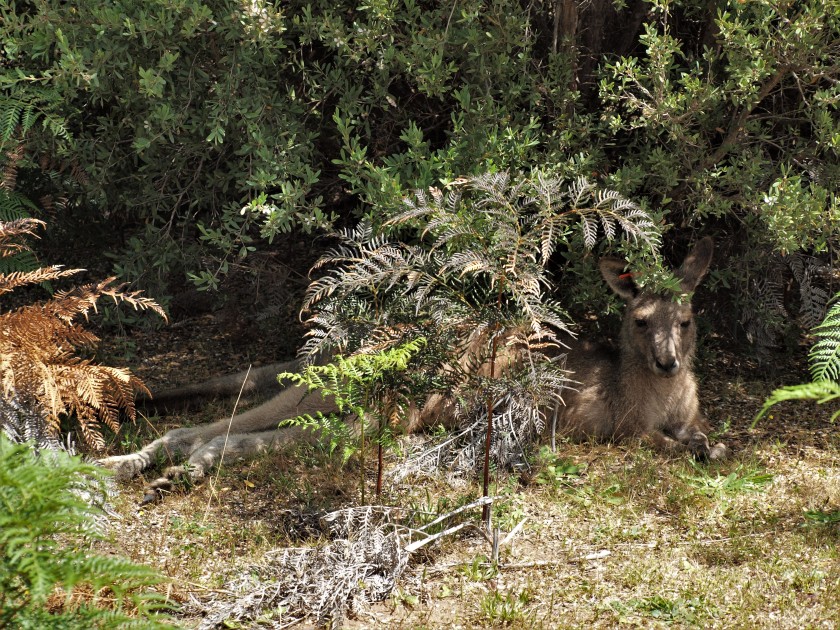


Driving further into the park, I leave my car at Picnic Bay next and walk the short distance to the beach with my lunch. I can’t imagine many other places that would have a better view for a picnic.
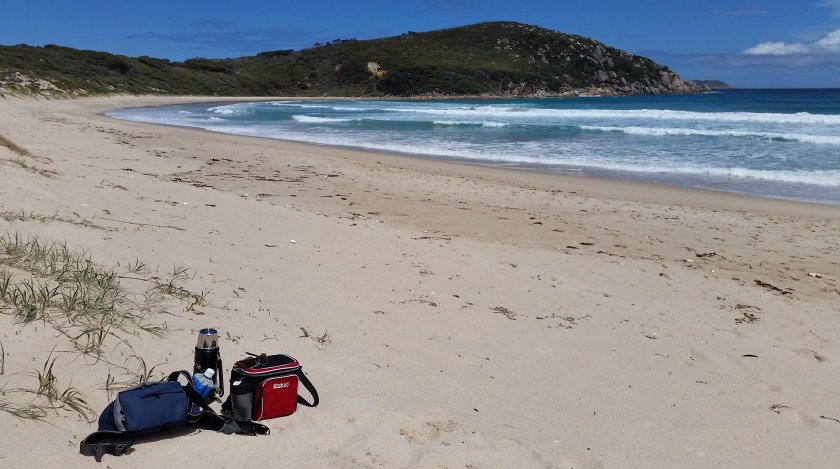
Before my afternoon walk I get to experience my first ‘bush dunny’ of the day, with its cramped phone box dimensions (when we had that sort of thing) and its creepy, long-drop, fly filled interior. No running water here, and putting a plastic toilet seat over a boxed hole doesn’t fool anyone. I realise why I prefer to pee behind a bush as soon as I enter, and have to mouth-breathe in the reeking interior. Closing the door only intensifies the acrid smell and concentrates the fetid air. My eyes sting when I open the lid. (Yes, it has one. ‘Close the lid on departure’, a sign helpfully suggests, as if this goes any way towards containing the odours from the mound of festering sewage beneath.)
Flies are excited at the prospect of a new arrival and begin to make circular laps around me, even before I’ve unzipped anything. I hesitate. Will my need overcome my revulsion?
Hovering over a dark hole with your most intimate parts dangling above a possibly snake-filled pit (for all I know) suggests either a level of daring, or perhaps just stupidity. A full bladder does it for me. I’m goal oriented. I hold my nerve. But it’s not for the squeamish.
The Lilly Pilly Circuit walking path (5.8km – 2 hrs) seems to combine a couple of tracks, traversing stringybark forest, and then rainforest filled with Lilly Pilly trees.

Bronze coloured tree sap oozes from blackened, burnt trunks, vibrant emerald ferns provide a tangled ground cover, and elegant grass trees splay their leaves stiffly from a central point, green filaments fanning out with pleasing symmetry, as if someone has just made them and left them there. At intervals there are skeletons of burnt-out tree stumps, evidence of the past bush fires, and of death amongst the emerging life.

OLYMPUS DIGITAL CAMERA

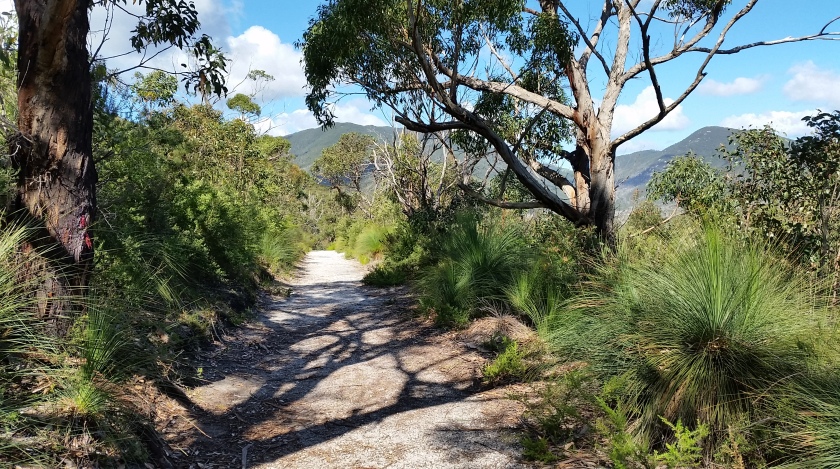
At a boardwalk I take a meander through the ferns and fallen tree branches, the air humming with cicadas and the buzz of flying insects. It’s cooler here, and shadow filled, so I pause to take a short video of this lazy tableau – something to revisit when I need a moment of calm.

Emerging to the carpark, there’s still time for the short drive to Tidal River where I can park in the visitor area near the General Store, café and information centre. I welcome the chance to visit a flush toilet in the scattered blocks of campground facilities, and admire the organised grid of tracks and lanes that demarcate each camping area.
Clusters of units and cabins, huts and group lodges are spaced out amongst the trees and divided into sections, with the river forming one boundary, and the beach overlooking Norman Bay the other. From a distance the buildings are almost lost to the encroaching bush that sprawls around it and sweeps upwards to the mountainous backdrop.
I find a beach access point near the footbridge so I can walk around to the vast expanse of Norman Beach. The sun is colouring-in the afternoon skies, the shores are peopled by distant figures.

The tide is a long way out, and on the wet sand, a carpet of bubbling holes underfoot reveals vast colonies of tiny burrowing crabs. Perhaps alerted by the tremors of my footfall, they screw down into the sand, disappearing below the surface before I can even make an imprint with my toes. There must be hundreds of them.

I take photographs of fat white clouds sitting above the backdrop of hills, the sheen of the water on the sand making it into a mirror that reflects the skies, and I wander the shores in thrall to the sweeping panorama.
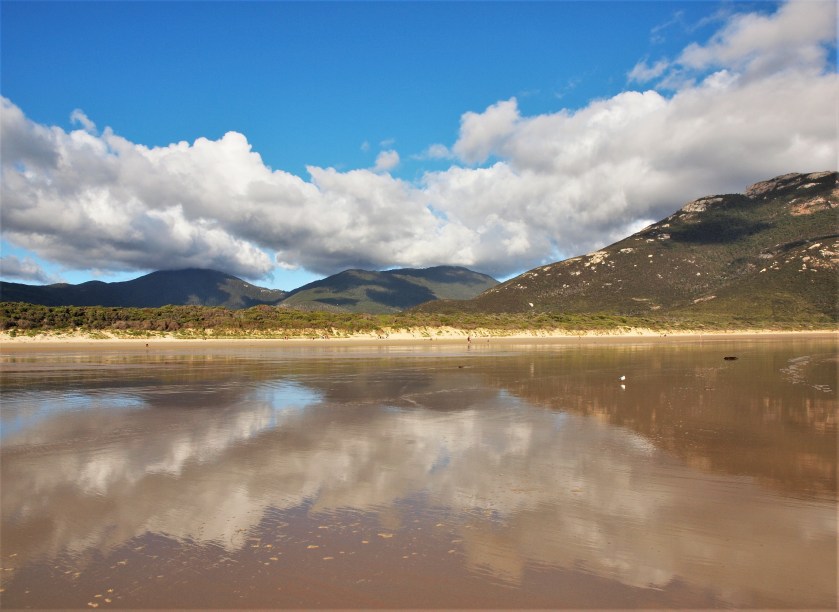
When I retrace the journey back through the park, I drive with some caution now that the sun is lowering. Wallabies graze at the verges, and at every sweep of the road I keep my eyes to the roadsides in case I see their familiar solitary shape in the dusk light. I pass a succession of them, on several corners, and slow down in case they bolt suddenly, but mostly they just spring back into the bush with a couple of leaps and, despite their size, are swiftly gone.
The bush, it seems, can claim anything to its shadowy fathomless depths.


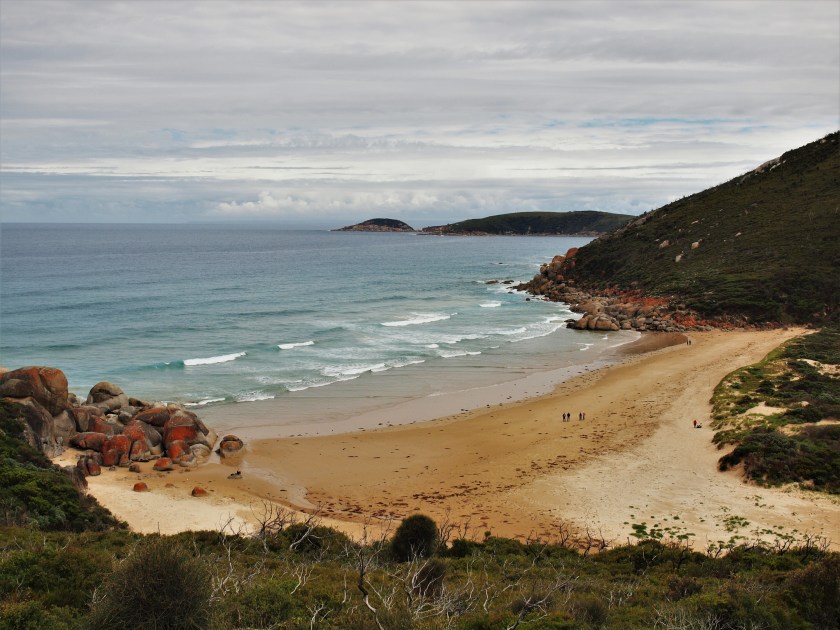

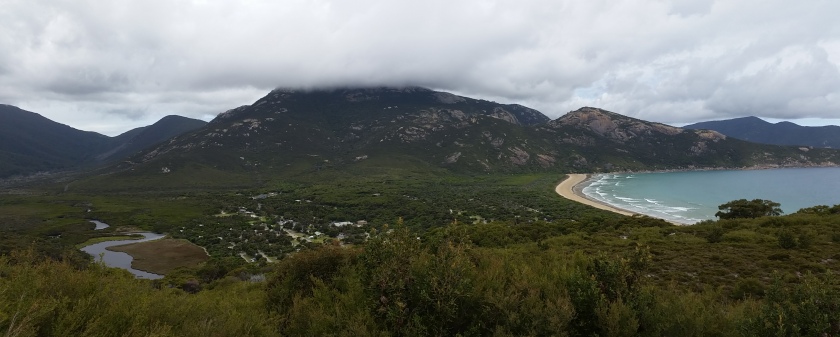

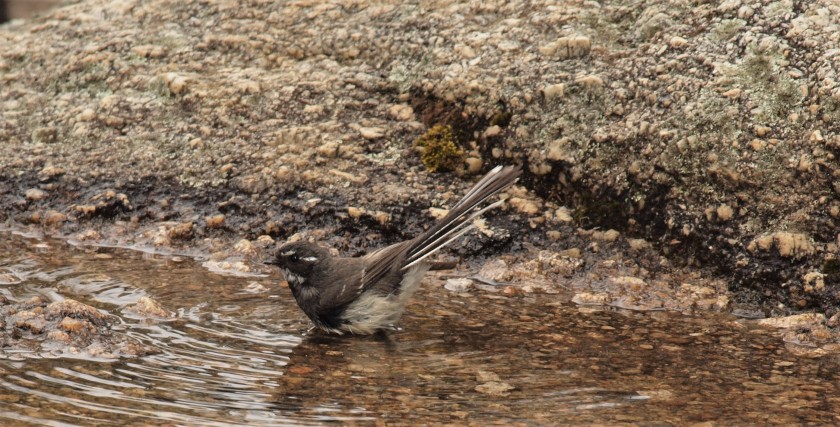
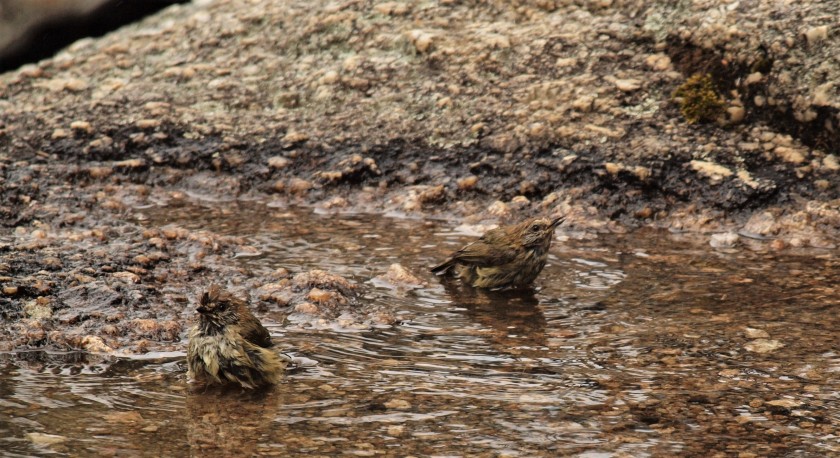

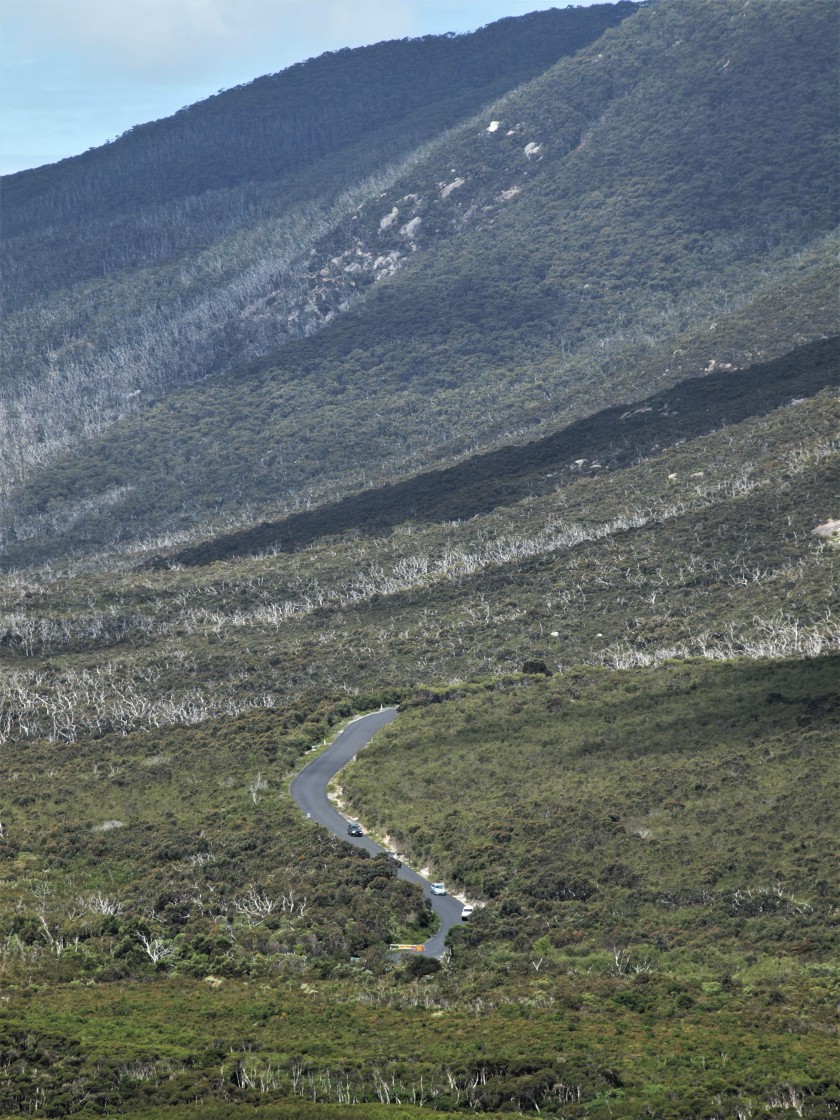
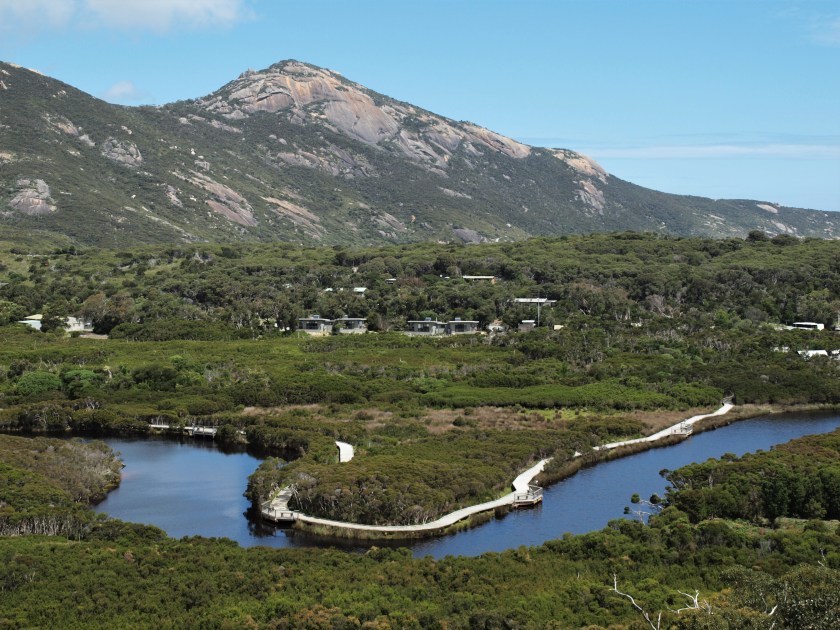
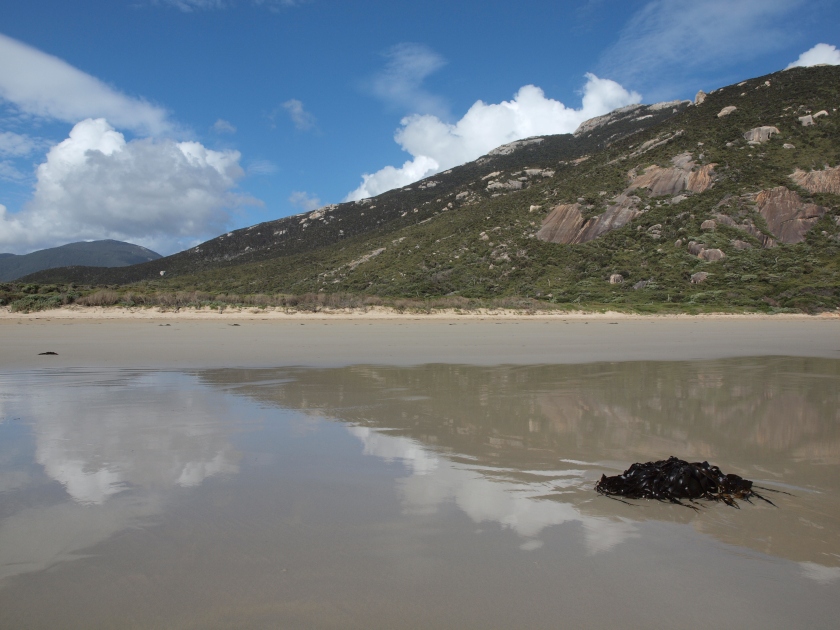
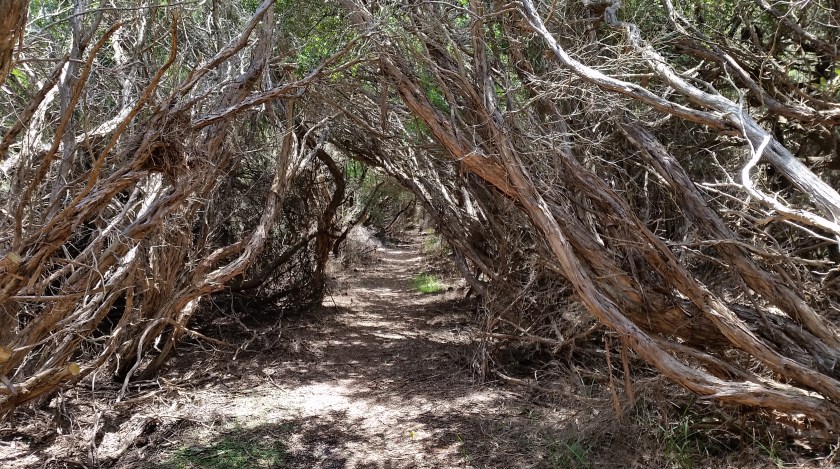































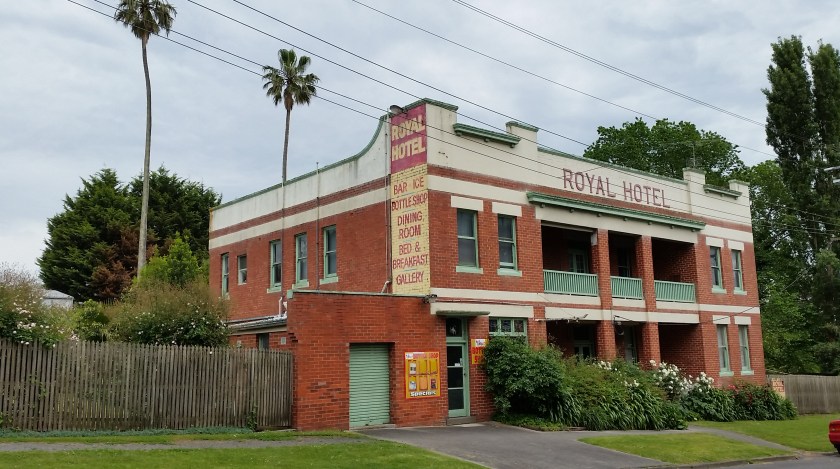
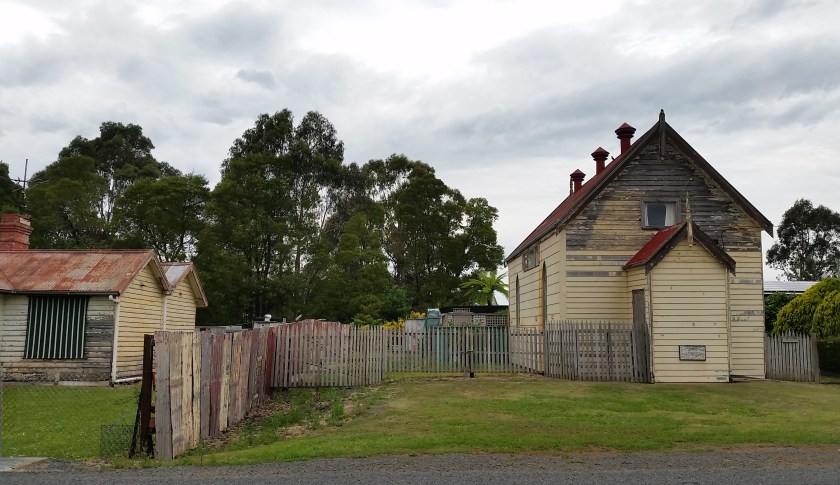




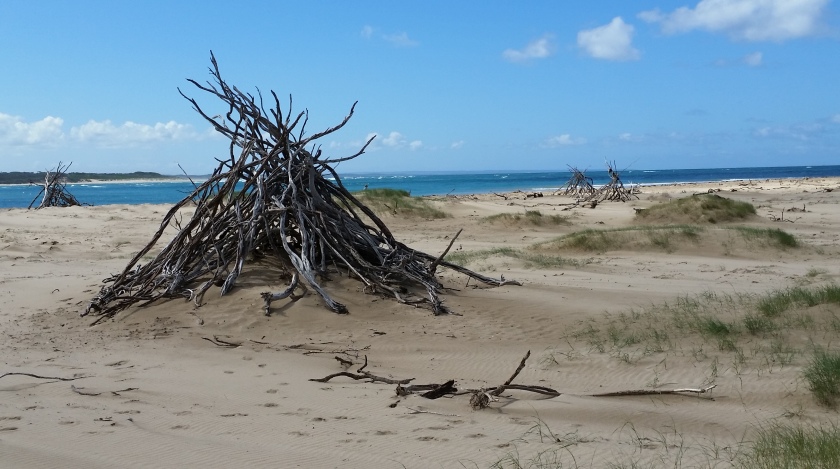
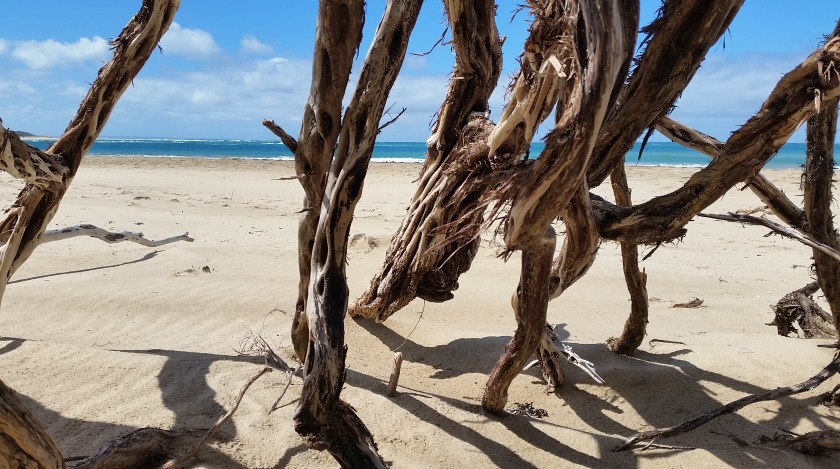




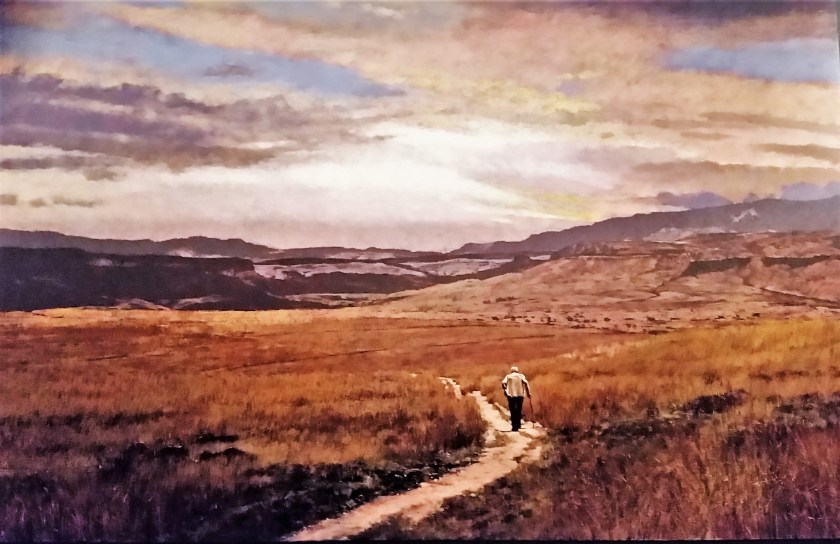
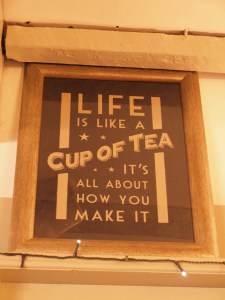 I haven’t been here for a while. Not in any sense. Let me explain.
I haven’t been here for a while. Not in any sense. Let me explain. Seasonal Affective Disorder, or the financial year blues? You might think of it as the winter woes, but I refer to it as Tax Fright.
Seasonal Affective Disorder, or the financial year blues? You might think of it as the winter woes, but I refer to it as Tax Fright.
You must be logged in to post a comment.